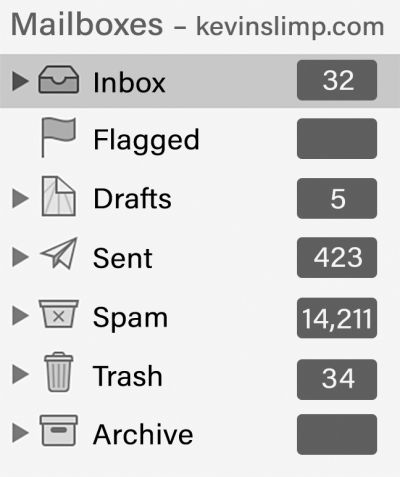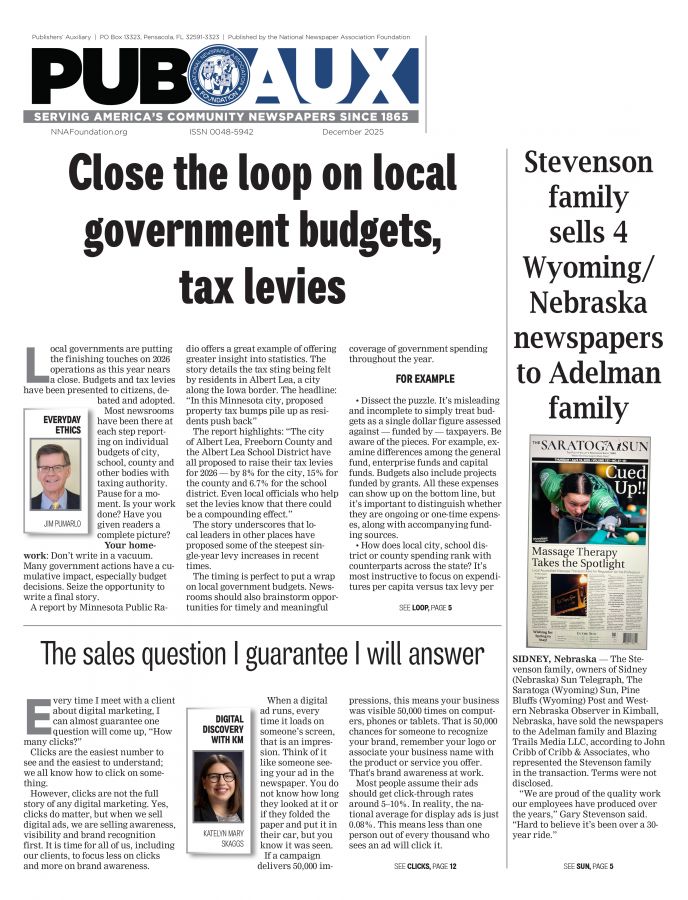Where did my email go? Kevin lists effective ways to help make sure people get your messages
Kevin Slimp
Apr 1, 2024


When checking my email a few days ago, I came upon a curious message from a publisher in Missouri:
Kevin,
Just checking in to see if you received my previous emails.
–Bill
You guessed it. I hadn't. Thankfully, Bill sent this latest message to an alternate email address, which appeared in my inbox. Taking a quick look at my email host server, I located Bill's earlier messages in spam folders, meaning they never even made it to the spam folder on my computer. I'd like to say I was surprised, but nothing about email surprises me anymore. As someone who receives hundreds of emails each day, not to mention thousands of messages in my spam folder, I spend a lot of time trying to make sure I see the messages people send to me and, just as important, trying to be sure the messages I send are received.
I've gotten a lot of positive feedback about lists in my recent columns, so I will strike while the iron's hot. This month's list is Kevin's Five Ways to Keep Your Emails From Ending Up in Someone's Spam Folder:
Don't use JPG or other graphics in your email signature. I can hear some of you now. “But my newspaper logo looks so good under my name!”
A few months ago, when I had hundreds of emails returned by spam filters on the same day, I contacted my email host, one of the world's biggest (and best). I wanted to know how this happened. There were two potential problems. One was my email signature, which included a JPG version of my company logo. I quickly learned that spam filters don't like those. Or maybe they do. Either way, the result can be a message in a spam folder.
Don't use email shorteners in your email messages. I learned this during the same phone call with my email host. That was a bigger problem than my signature, and I didn't realize it. I had used a shortener—– msb.press.com — for years with no problem. Suddenly, almost every message I sent with a URL that included msb.press.com was returned from a spam server, meaning it never made it to the intended inbox (or even the spam filter, for that matter). Even though URLs can get long, I resist the urge to use a shortener.
Create an alternate email address to use with essential messages. Now, when I have a crucial message to send out to someone who isn't a frequent email correspondent, I send the same message from my standard and alternate email addresses. Most often, I use Gmail for my alternate addresses. This means the receiver might receive two identical messages, one from kevin@kevinslimp.com and one from kevinslimp@gmail.com. Sure, it's an extra message in the inbox, but it's a much better option than the message getting lost on a spam server. I've yet to receive a complaint from someone who received two messages.
Attachments are big red flags for spam filters, especially if you add too many. Emails with too many attachments are unlikely to reach recipients' inboxes. To keep this from becoming an issue, I've turned to Dropbox.com to store files, sending the Dropbox link in an email.
Keep email subjects short without using special characters. Use only letters and numbers in the subject area of an email. Never use percent symbols, exclamation points or other special characters. Chances are messages with subject lines using these characters won't make it to the inbox.
It probably wouldn't surprise you that spammers send billions of unwanted messages daily. It sometimes feels like half of them end up in my email folders. Spam filters are necessary to protect recipients from malicious cyber attacks. In response to the rise in email fraud and phishing, advances in artificial intelligence have made modern spam filters more sophisticated and accurate. The downside is that they are blocking more messages by becoming more aggressive.
I could have created a list of 10 or 15 ways to keep your emails from landing in someone's spam folder. If I had written a longer list, it would have included hints like:
• Don't carbon copy more than a few people on the same message
• Don't use trigger phrases like "Big Sale!" or "50% Off!" in your messages
• Be sure your "From" line includes your name (or company name)
I'm nearing my 800-word limit, so I'll leave you with five. You can thank me later.
Kevin Slimp is a popular consultant, advisor and trainer in the newspaper industry. From 1997-2018, Kevin directed The Newspaper Institute of The University of Tennessee. He currently serves as CEO of Market Square Publishing and Chief Guru at NewspaperAcademy.com. kevin@kevinslimp.com.










